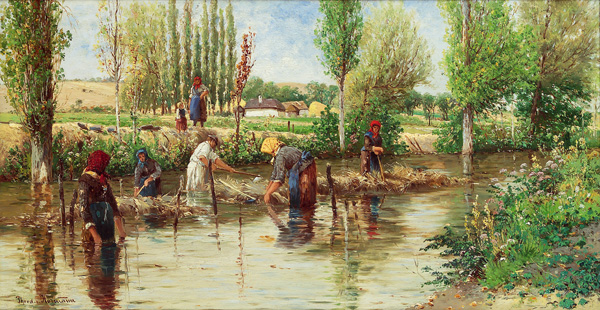Original French: L’enſeignemẽt premier de Pãtagruel feut,
Modern French: L’enseignement premier de Pantagruel feut,
King Pantagruel directs the harvesting of the hemp crop and and the preparation of thread and rope.
Notes
Heckling hemp
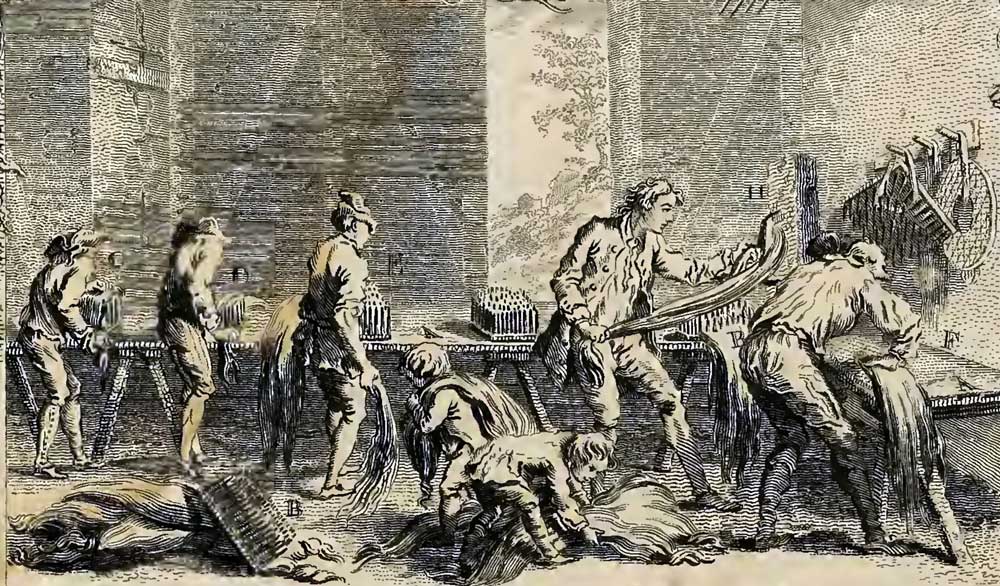
Wisset, Robert,
A Treatise on Hemp. Including a comprehensive account of the best modes of cultivation and preparation as practised in Europe, Asia, and America. London: J. Harding, 1808.
Internet Archive
Skutching hemp
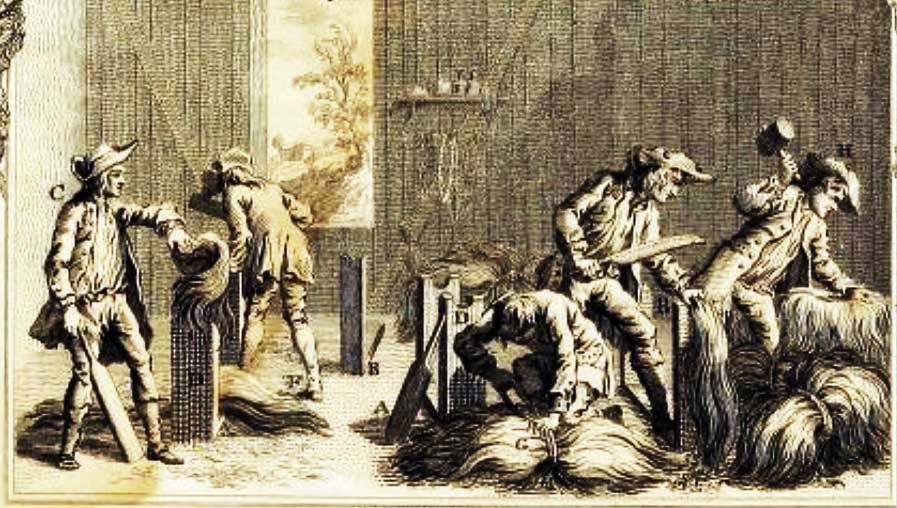
Wisset, Robert,
A Treatise on Hemp. Including a comprehensive account of the best modes of cultivation and preparation as practised in Europe, Asia, and America. London: J. Harding, 1808.
Internet Archive
Le rouissage
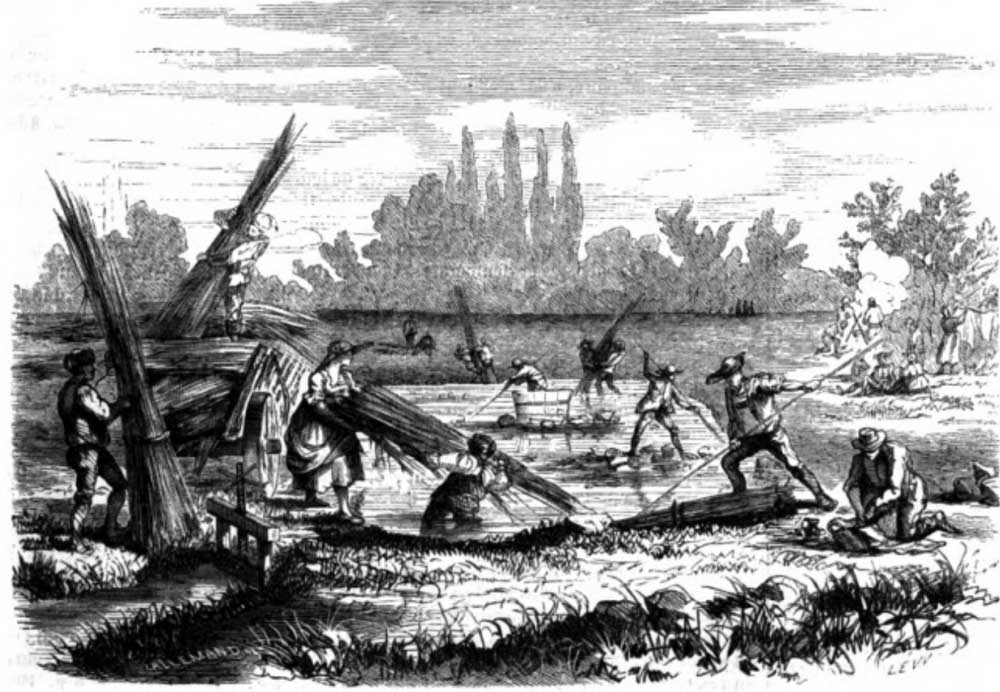
Fiber hemp crops are harvested in late summer when they begin to flower, and then the stalks are bundled together and submerged in water to ret.
Loiseau, Léon, “Les chanvriers du Rhin”. G. Lallemamnd, illustrator.
L’illustration: journal universel, v. 36, 1860. p. 356.
Hathi Trust Digital Library
Breaking hemp
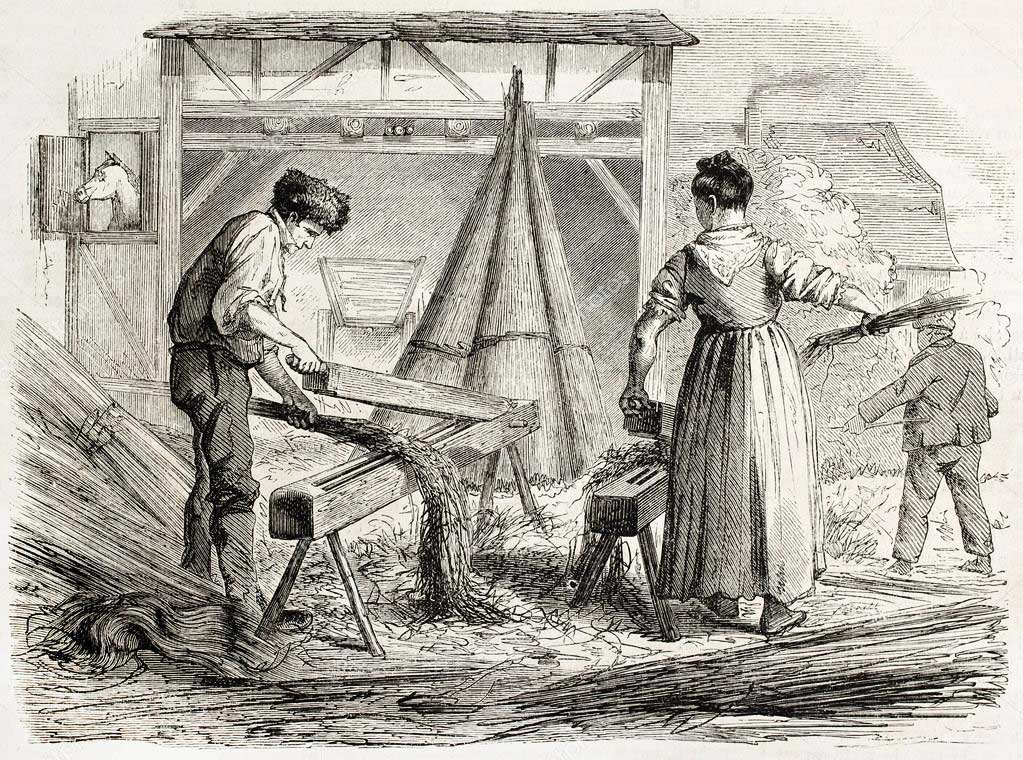
Loiseau, Léon, “Les chanvriers du Rhin”. G. Lallemamnd, illustrator.
L’illustration: journal universel, v. 36, 1860. p. 356.
Hathi Trust Digital Library
Cassant chanvre à la main
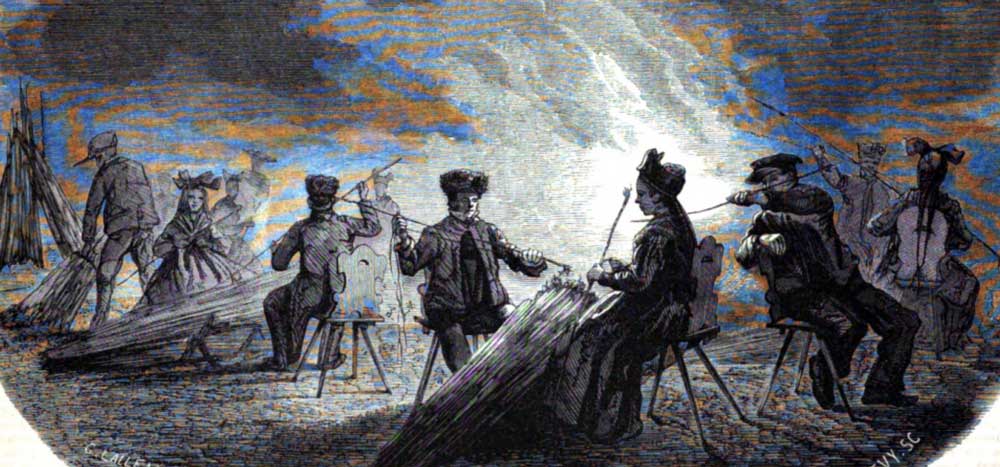
Loiseau, Léon, “Les chanvriers du Rhin”. G. Lallemamnd, illustrator.
L’illustration: journal universel, v. 36, 1860. p. 356.
Hathi Trust Digital Library
Chanvriers
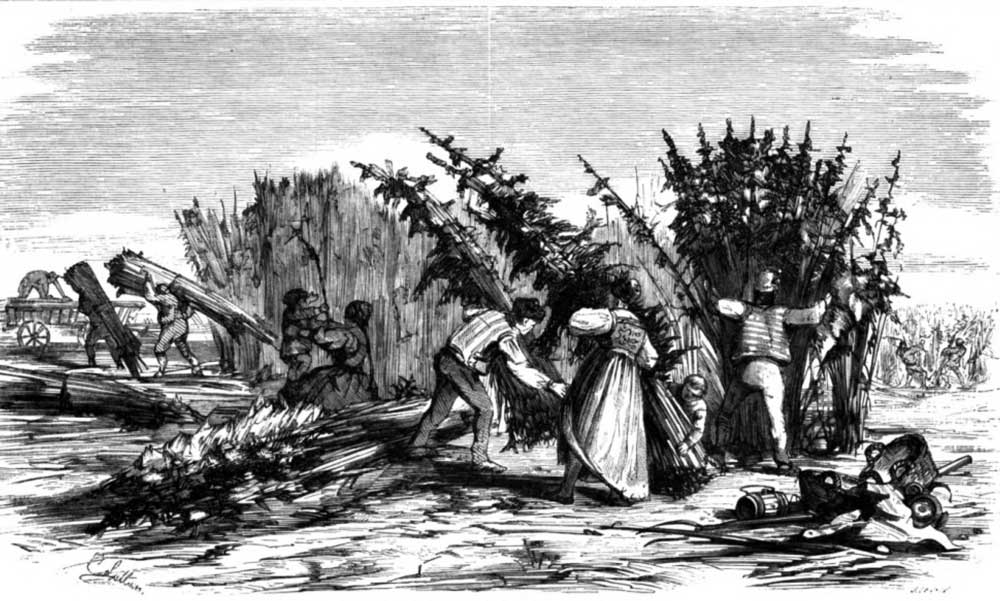
Les chanvriers des bords du Rhin — La récolte (the harvest)
Loiseau, Léon, “Les chanvriers du Rhin”. G. Lallemamnd, illustrator.
L’illustration: journal universel, v. 36, 1860. p. 356.
Hathi Trust Digital Library
Combing and spinning hemp
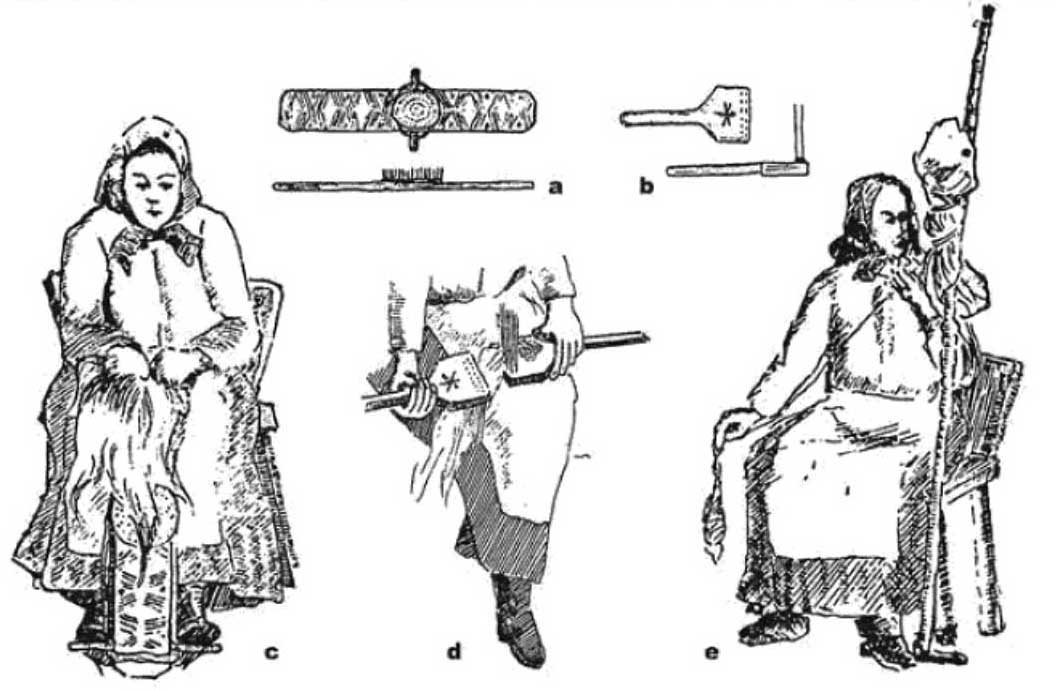
Domokos, P. P., A kender feldolgozása ésközei Menaságon. (The way and tools of hemp processing in Menaság). 1930.
preparation of hemp
Reliqua sunt ferulacei generis, ceu feniculum anguibus, ut diximus, gratissimum, ad condienda plurima cum inaruit utile, eique perquam similis thapsia, de qua diximus inter externos frutices, deinde utilissima funibus cannabis. seritur a favonio; quo densior est eo tenerior. semen eius, cum est maturum, ab aequinoctio autumni destringitur et sole aut vento aut fumo siccatur. ipsa cannabis vellitur post vindemiam ac lucubrationibus decorticata purgatur. optima Alabandica, plagarum praecipue usibus. tria eius ibi genera: inprobatur cortici proximum aut medullae, laudatissima est e medio quae mesa vocatur. secunda Mylasea. quod ad proceritatem quidem attinet, Rosea agri Sabini arborum altitudinem aequat. ferulae duo genera in peregrinis fruticibus diximus. semen eius in Italia cibus est; conditur quippe duratque in urceis vel anni spatio. duo ex ea olera, caules et racemi. corymbian hanc vocant corymbosque quos condunt.
There remain the garden plants of the fennel-giant class, for instance fennel, which snakes are very fond of, as we have said, and which when dried is useful for seasoning a great many dishes, and thapsia, which closely resembles it, of which we have spoken among foreign bushes, and then hemp, which is exceedingly useful for ropes. Hemp is sown when the spring west wind sets in; the closer it grows the thinner its stalks are. Its seed when ripe is stripped off after the autumn equinox and dried in the sun or wind or by the smoke of a fire. The hemp plant itself is plucked after the vintage, and peeling and cleaning it is a task done by candle light. The best is that of Arab-Hissar, which is specially used for making hunting-nets. Three classes of hemp are produced at that place: that nearest to the bark or the pith is considered of inferior value, while that from the middle, the Greek name for which is ‘middles’, is most highly esteemed. The second best hemp comes from Mylasa. As regards height, the hemp of Rosea in the Sabine territory grows as tall as a fruit-tree. The two kinds of fennel-giant have been mentioned above among exotic shrubs. In Italy its seed is an article of diet; in fact it is stored in pots and lasts for as much as a year. Two different parts of it are used as vegetables, the stalks and the branches. This fennel is called in Greek clump-fennel, and the parts that are stored, clumps.
Pliny the Elder (23–79 AD),
The Natural History. Volume 5: Books 17–19. Harris Rackham (1868–1944), translator. Cambridge, Massachusetts: Harvard University Press, 1950. 19.56.
Loeb Classical Library
le rouissage
C’est le rouissage, toujours en usage dans l’ouest de la France.
Rabelais, François (1483?–1553),
Oeuvres. Édition critique. Tome Cinquieme: Tiers Livre. Abel Lefranc (1863-1952), editor. Paris: Librairie Ancienne Honoré Champion, 1931. p. 345.
Internet Archive
L’enseignement premiere de Pantagruel
Pline, XIX,56 (cf. C. Estienne, Praedium rusticum, 436).
Rabelais, François (1483?–1553), Le Tiers Livre. Edition critique. Michael Andrew Screech (1926-2018), editor. Paris-Genève: Librarie Droz, 1964.
Traditional European hemp fibre harvesting and processing
p. 163 Traditional European hemp fiber harvesting and processing are illustrated in these nineteenth-century British and French engravings and an early twentieth-century Hungarian ethnographic report. Fiber hemp crops are harvested (A) in late summer when they begin to flower, and then the stalks are bundled together and submerged in water to ret (B). After soaking for a few days, the stalks are removed from the water and dried in the sun. The dry stalks are broken (C) to free the fibrous bark, the bark strips are skutched (D) to remove bits of woody pith and hackled (E) to split the strips and remove short fibers. The individual fiber bundles were combed and spun from a distaff much like wool (F). Images A-C are from L’illustration Journal Universel (1860), D and E are from Wissett’s A Treatise on Hemp (1808), and F is from Domokos (1930).
p. 164 The world’s great navies and merchant sailing fleets relied on strong hemp rope rigging for hoisting sails and lashing down cargo. Engraving from The Illustrated London News, November 23, 1861.
Clarke, Robert,
Cannabis. Evolution and Ethnobotany. Mark Merlin, co-author. Berkeley, California: University of California Press, 2013.
Google Books


